The textile industry is a notoriously toxic industry. Not only for environmental aspects but also the toxins you are exposed to on a daily basis when you wear your clothes. Toxins like AZO dyes (heavy metals including lead), formaldehyde, PVC, and toxic waterproofing agents to name a few. Your skin is your largest organ, and what you put on your body matters. These clothing certifications will help you make healthier choices for you and your family – as well as for the environment.
Figuring out how to buy less toxic clothing can be complex and confusing. There are many considerations to make including types of fibers and fabric all the way to the finishing of the product.
I’m going to help you wade through all the details so you know what certifications you are looking for and what those certifications mean.
The fibers we buy matter. Did you know cotton accounts for 25% of the world’s pesticide usage? By buying organic cotton, for example, you are buying healthier products for you and your family. Synthetic fibers release toxins and pollute the earth, and your home, with microfiber plastic.
For more information on different clothing fibers (and how they are processed) like cotton, organic cotton, hemp, bamboo, etc. see my post on If Organic Clothing is Worth It.
When I had my first child I was trying to find the healthiest clothing I could buy for him. Babies’ skin is so thin and I wanted to reduce the number of toxins I was exposing him too.
So I started researching certificates and finding out everything I could learn. I spoke to business owners who own organic clothing, fabric and mattress companies, leading organic fabric suppliers, and have poured over the data in the certifying agencies themselves.
I’m going to share with you my knowledge so that you can make informed decisions about your purchases going forward.
This post may contain affiliate links. Please see my full disclosure policy for details.
Quick Navigation
What You Need to Know About Clothing Certifications
Looking at the certifications below you will have a better understanding of what each certification means. Then you can tailor your purchases around these certifications and have a full understanding. Honestly, it makes shopping so much easier.
Not all of these certifications are perfect, but they are better than none!
Without the certification, you don’t know what chemical inputs were used to make your items.
Buying with certifications will allow you to weed out the good companies from the greenwashed companies which will lead to healthier products for you and your family!
Why Are Organic Clothing Certifications Important?
Buying organic clothing (or fabric) is simply not enough, without certifications you are likely ending up with a toxic organic product. Organic certifications are in place to ensure the final product is truly toxin-free. That’s where certifications come into play.
Buying items with certifications, you will get the peace of mind that what you are buying is truly non-toxic and organic.
When my son was first born I was so excited to find organic baby clothes at a big retail baby store. I scooped up several pieces and happily went home thinking I bought truly organic clothes for my child. After researching more, I learned that what I bought was indeed 100% organic cotton but the processing on those clothes was a traditional, toxic finishing. My son’s organic clothing was no longer organic. I was mad and felt duped.
You could buy organic clothing with no certifications and end up with a pair of pants, or sheets, that have a heavy chemical finish like toxic AZO dyes (heavy metals) and formaldehyde in the finish. Not only is it bad for you (remember your skin is your biggest organ) but it’s bad for the environment.
I later found out the organic crib sheets I had purchased from a hugely popular store were wrinkle resistant and that formaldehyde was likely used to achieve this. I could care less about wrinkles but I did care that my son’s organic crib sheets weren’t really organic and I had been exposing him to toxins!
The organic fiber market can be very tricky. There are so many misleading statements like:
- Made with organic cotton (which can also have other non-organic fibers)
- 100% organic cotton (with no certifications)
- A certification on the organic cotton only. Meaning that the organic cotton was certified but not on the final product. For example, GOTS certified organic cotton vs GOTS certified on the final product.
- Misleading organic claims when there isn’t a certification to back it up (meaning the product isn’t entirely organic).
Organic Clothing Certifications
GOTS
GOTS, Global Organic Textile Standard, is the gold standard in organic certifications. This is the cleanest certification available on the market. The GOTS certification is from seed to finish (including the packaging!) and has both environmental as well as toxicological standards. This means, the growth of the fiber, the processing, the cleaning, transforming it into the fabric, any and all dyes and fabric finishes, etc. all the way to the final product will be certified against GOTS standards.
All fibers must be organic whether it is organic cotton, organic wool, organic linen, or any other fiber. You won’t find non-organic cotton with a GOTS label. Please note, there is an allowance of 5% synthetic for things like elastic, thread, buttons, and so forth. For example, you can find an item that is 95% organic cotton and 5% elastane that is GOTS certified. It’s still important to read labels if you are like me and want 100% organic cotton whenever possible.
GOTS does not allow flame retardants, formaldehyde*, chlorine bleach (peroxide is often used as an alternative), GMOs, toxic waterproofing DWRs like PFCs, phthalates, PVC, BPA, AZO dyes that use heavy metals, and the list goes on!
*If you look at the allowances on the GOTS website you will see that there is a low-level allowance for formaldehyde. This is an allowance for cross-contamination if that were to happen. The direct use of formaldehyde is strictly prohibited.
GOTS clothing is made in GOTS certified factories. Employees must have fair working conditions and are paid a fair wage. Child labor is prohibited. There can be no animal cruelty. Wastewater must be filtered and treated before putting it back out into the environment.
How To Tell If Something Is GOTS Certified?
The logo will either be on the packaging, tags or on the item itself. The logo can be either green or black. If you see the logo, you can rest assured that the final product is GOTS certified. This is the only time the GOTS logo below is allowed to be used.

I have purchased items online that state they are GOTS certified and when I received the product there was no label. I investigated the item and found out that it was not GOTS. That is why verifying the label on your product or packaging is important.
You can also verify if something is GOTS certified by checking the GOTS database. If it is not in the database then it is not certified.
Where Can You Find GOTS Certified Items?
I have posts that recommend GOTS certified items like my kid’s clothing posts, my non-toxic gift-giving guide, or items in my online Amazon store. You can also search for the GOTS database for companies that are GOTS certified.
Things To Be Aware of with GOTS:
GOTS Grade 2 Certification: GOTS has a grade 2 certification that allows for up to 30% of the material to not be organic. No more than 10% of this certification can be synthetic.
This logo is labeled Made with X% organic material. For example, 70% organic material certified to the Global Organic Textile Standard. Reading labels even if you see the words GOTS is very important. The GOTS logo for grade 2 looks like:
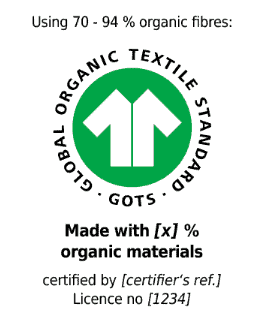
Made with GOTS certified organic cotton: This means that only the organic cotton was grown to GOTS standards. The final product does not meet the standards and could be processed with toxic dyes and chemical finishes.
The GOTS logo is not allowed to be used but you will often find wording stating something like 100% organic GOTS certified organic cotton. Again, you want final product certification not just certification on the organic cotton itself.
Bottom Line on GOTS:
GOTS is the best, and most widely used, organic clothing certification on the market today.
GOTS certified on the final product is the standard I look for whenever possible when buying for my family.
IVN, Soil Association, Ecocert, SKAL
If you find organic clothing with the IVN, Soil Association, Ecocert or SKAL certifications it is equal to GOTS. These certifications aren’t as common anymore but you will find them occasionally especially from items made in Europe.
Bottom Line on IVN, Soil Association, Ecocert & SKAL:
Since it is equal to GOTS all of these are great certifications as well. They just aren’t as common.
The History of Organic Clothing Certifications
For some history (for you other nerds out there who like knowing the backstory!), in the early 2000’s there were multiple different organic fiber certifications in the market. A larger global working group, The International Working Group on Global Organic Textile Standard (IWG) was established to help consolidate the organic fiber certifications and to lessen confusion for consumers.
IWG set the stage for a consolidated, global certification – GOTS. When companies decide to use the GOTS certification, they must let go of their previous certifications (like IVN) to create less confusion and more cohesiveness within the industry.
Organic and Conventional Clothing Certifications
Oeko-Tex 100
Oeko-Tex is a certification for conventional, organic and synthetic fibers. It doesn’t allow hundreds of toxic chemicals but there are some very important differences between Oeko-Tex and GOTS to be aware of.
Oeko-Tex does allow the use of flame retardants (certain ones with approval), heavy metals including lead, formaldehyde, DWRs, phthalates, BPA, pesticides, GMOs, etc. Many chemical inputs are regulated by allowable limits they must be under to quality for Oeko-Tex.
There are 4 class types within Oeko-Tex:
- Class I is intended for babies and is the most restrictive and has the lowest allowable limits of toxins.
- Class II is for items with direct contact of skin.
- Class III is for items with no direct contact for skin like coats.
- Class IV for decorative items such as buttons or pins and is the least restrictive.
Here are a few examples of allowable levels within Oeko-Tex:
- Lead is allowed under 90 mg/kg in all classes. 90 mg/kg equals 90 ppm (parts per million) which is the allowable amount of lead in children’s products. My personal opinion is that any amount of lead should not be allowed in children’s products since it is a neurotoxin.
- Formaldehyde is not allowed to be used in Class I (baby) but up to 300 mg/kg (ppm) is allowed in Class IV.
How to Tell if Something is Oeko-Tex:
You will find the logo on the product or packing. The Oeko-Tex will logo looks like:
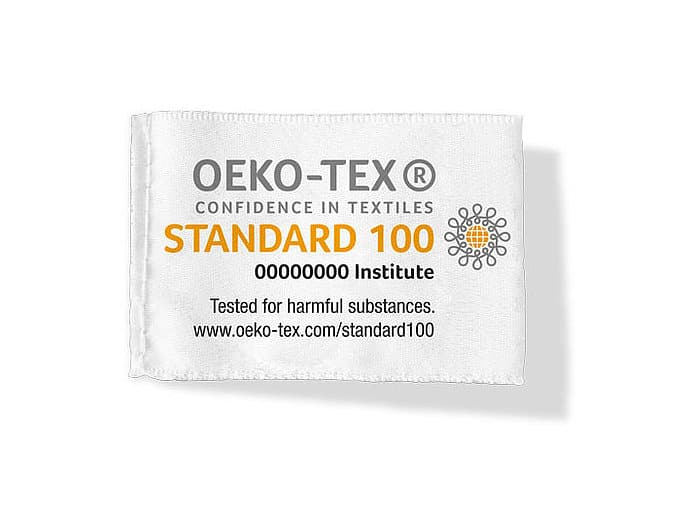
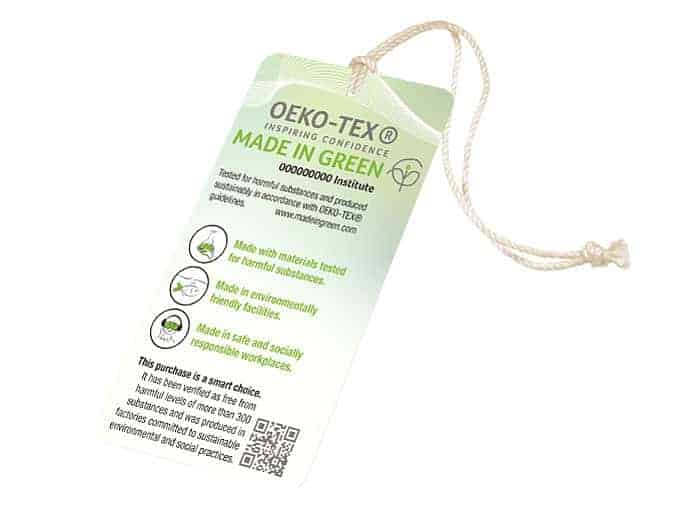
The Oeko-Tex Made in Green label is everything within the Oeko-Tex 100 label plus being made in environmentally friendly facilities with safe and socially responsible workplaces.
Bottom Line on Oeko-Tex:
Oeko-Tex is a good certification that limits the toxins allowed in the final products. However, Oeko-Tex is not as stringent as GOTS.
Bluesign
Bluesign is a certification that creates a safer environment for people to work in as well as to live in. It has a 3 components focus:
- People: worker safety and end-users of the garment
- Environment: emissions to water, air and soil are as low as possible
- Resources: water, energy, chemicals and raw material
The environmental, as well as toxicological inputs, need to be taken into consideration for the manufacturer. There is not a threshold or allowance to stay under for chemical inputs as other certifications have.
Examples of Restraints for Bluesign:
- Biocides (preservatives) and antimicrobials are both stated that they should be avoided or at least used minimally.
- The use of perfumes should be avoided (with an allowable exception)
- Chlorinated solvents and perfluorinated and polyfluorinated substances are not allowed.
How to Qualify for Bluesign
In order to use the bluesign certification, 90% of the materials must qualify for the bluesign. The bluesign logo found on product tags will look like this:
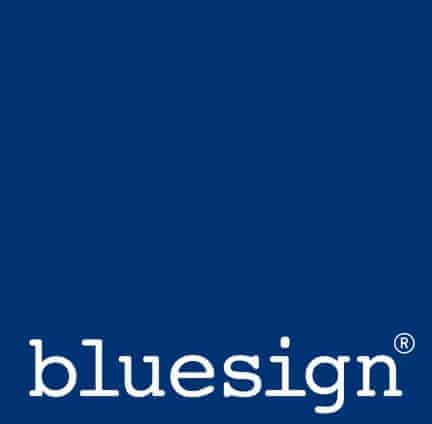
Bottom Line on bluesign:
Bluesign is not as stringent as GOTS or Oeko-Tex but is still a good certification to help you chose healthier clothes.
Final Thoughts on Clothing Certifications:
As you can see, buying clothing with certifications will help reduce the toxins used when making your clothing. This, in turn, makes healthier clothing for you and your family. I hope you have found the information about these certifications helpful. I promise it helps makes shopping easier once you know what certifications to look for!
For a comprehensive guide to organic clothing for children please see my post on Organic Clothing for Babies and Kids.
Pin it for later!
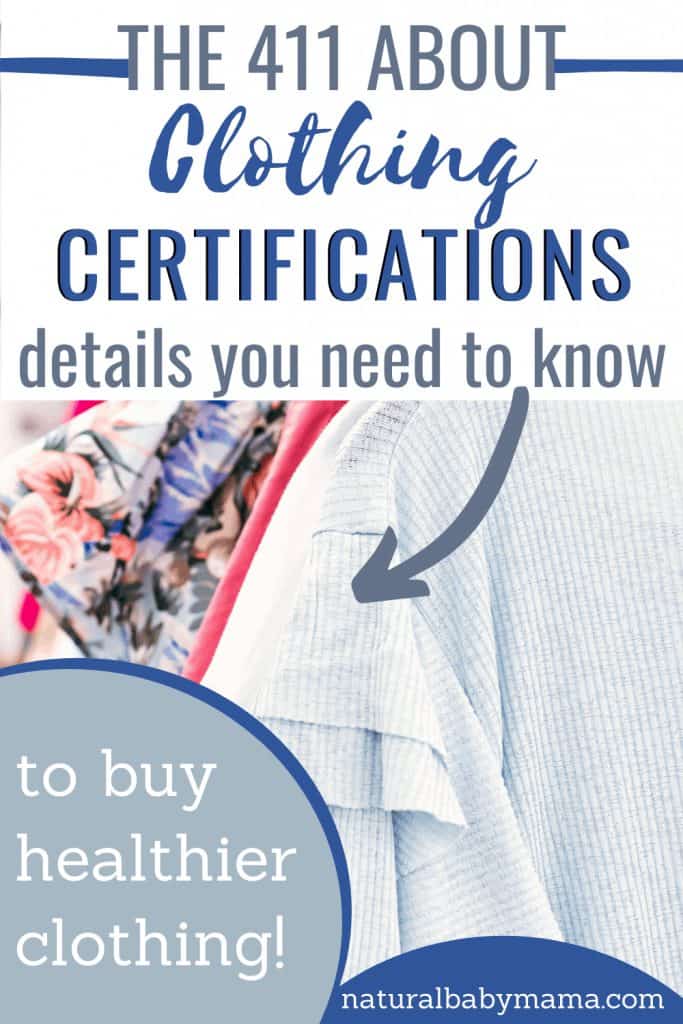




Do you have any information or recommendations for women’s organic clothes? Thanks:-)
Hi, I am working on an organic clothing post for women. Check back by the end of the month I hope to have it out!